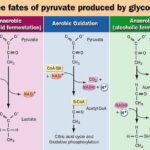AS and A Level Biology 84 Views 1 Answers
Sourav PanLv 9October 31, 2024
Describe the features of ATP that make it suitable as the universal energy currency
Describe the features of ATP that make it suitable as the universal energy currency
Please login to save the post
2
Please login to submit an answer.
Sourav PanLv 9May 15, 2025
ATP (adenosine triphosphate) is often called the “universal energy currency” because of several unique features that make it ideal for storing and transferring energy in cells:
1. Structure with High-Energy Bonds
- ATP consists of three phosphate groups attached to an adenosine molecule. The bonds between these phosphate groups, especially the bond linking the terminal (third) phosphate, are high-energy bonds. When ATP is hydrolyzed to ADP (adenosine diphosphate) and an inorganic phosphate (Pi), a significant amount of energy is released that can be used for various cellular processes.
2. Immediate and Readily Available Energy Source
- ATP can be hydrolyzed quickly and easily, providing immediate energy to cells. Unlike energy stored in larger molecules (like glucose or fat), ATP doesn’t require complex breakdown steps to release energy, allowing it to be readily available for immediate use.
3. Regenerability
- ATP is renewable, meaning it can be reformed after use. ADP can be re-phosphorylated to ATP by adding a phosphate group, a process driven by energy derived from respiration or photosynthesis. This continuous regeneration makes ATP highly efficient as an energy carrier.
4. Small and Soluble
- ATP is a small, water-soluble molecule, which allows it to diffuse easily throughout the cell. This mobility is crucial because it enables ATP to transfer energy to various parts of the cell where it’s needed.
5. Transfers Manageable Amounts of Energy
- Each ATP hydrolysis releases a specific, manageable amount of energy. This prevents excess energy release that could damage cellular structures, making ATP an efficient energy source that minimizes waste.
6. Compatibility with Enzymes
- ATP can bind to many enzymes and proteins, making it compatible with a wide variety of cellular reactions. Enzymes that catalyze reactions requiring energy can directly utilize ATP as a substrate, facilitating energy transfer within the cell.
1
1 likes
- Share on Facebook
- Share on Twitter
- Share on LinkedIn
0 found this helpful out of 0 votes
Helpful: 0%
Helpful: 0%
Was this page helpful?




